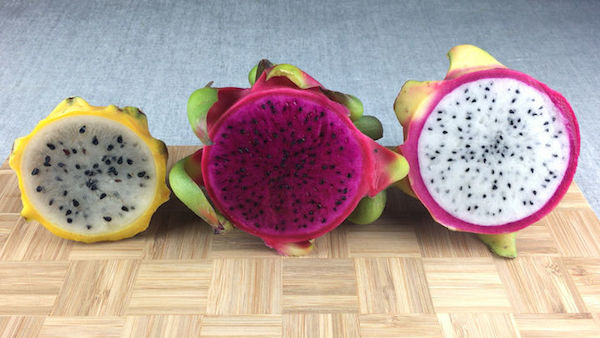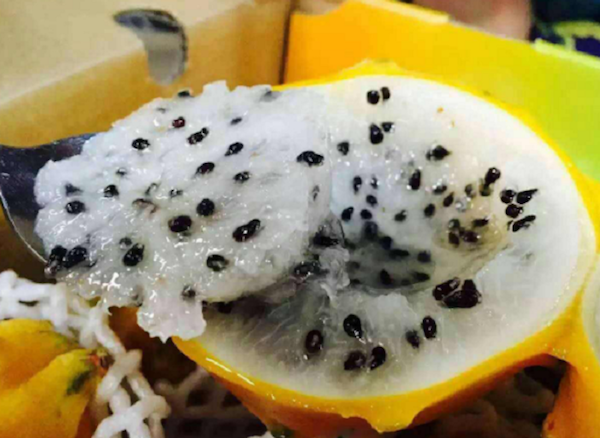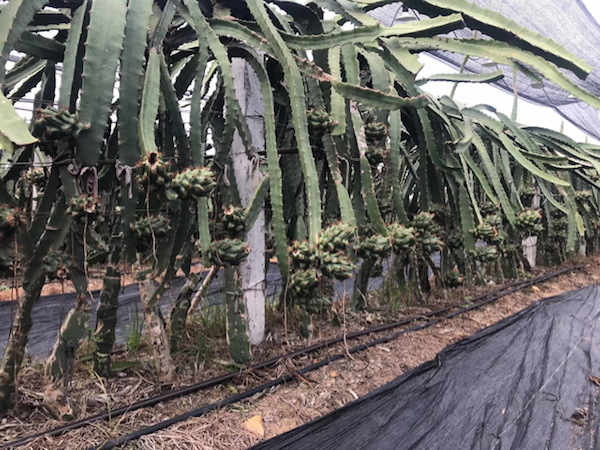Yellow Pitaya were originally introduced from Central America. This fruit is rich in nutrients and possesses rare albumins and anthocyanidins, as well as vitamins and water soluble dietary fibers. The Chinese production volume of Yellow Pitaya is extremely limited and primarily concentrated in Hainan and Guangdong. There are two supply periods per year, in April-June and December-January.
"Hainan has a distinct advantage over Guangdong in the Yellow Pitaya market. Yellow Pitayas have high requirements for plantation management and plantation technology, but their production volume per hectare is quite low. In Hainan, however, many of the natural growing conditions are already present due to its tropical climate.
"This year their production volume expanded in comparison with last year. The price dropped by 10%. The main reason for the expanded production volume is an expansion of overall surface area devoted to Yellow Pitaya plantation." This is according to Mr. Chen Weiwen of Guangdong Aimu Agricultural Development Co., Ltd.

Yellow Pitaya, red dragon fruit, and white dragon fruit

Yellow Pitaya
The Yellow Pitaya requires 3-6 months from blossom to fruit. The fruit weighs less than regular dragon fruit. In addition, the plantation of Yellow Pitaya is more difficult than regular dragon fruit, and the requirements of plantation technology are higher too, but the production volume per hectare is lower. Among Yellow Pitaya, red dragon fruit, and white dragon fruit, the Yellow Pitaya is the smallest fruit and the red dragon fruit is the largest. The fruit flesh of Yellow Pitaya and white dragon fruit is both white, although the fruit flesh of Yellow Pitaya has a slightly darker tint to it. That is mainly due to the black seeds in the fruit flesh.
According to Mr. Chen Weiwen: "The price of Yellow Pitaya is much higher than the price of regular dragon fruit. Sales conditions are quite good. The retail price of top-quality Yellow Pitaya is around 60 yuan [9.41 USD] per 0.5 kg. The price of Yellow Pitaya is high because regular dragon fruit is commonly seen in the Chinese market, and the overall surface area devoted to dragon fruit plantation in China is huge, which is why supply exceeds demand and the price comes down. That is not the case for Yellow Pitaya. This fruit has slowly settled in the Chinese market over the last few years and the number of loyal customers who are familiar with this fruit is already quite high. They are very well aware of the high nutritional value of this fruit. I estimate that the overall surface area devoted to Yellow Pitaya plantation in Hainan will rapidly grow over the next three years."

Yellow Pitaya plantation
Guangdong Aimu Agricultural Development takes advantage of the limited production volume and concentrates on gift boxes and bags of premium Yellow Pitaya. They primarily sell through traditional retail channels, and their products are available in market stands and fruit shops throughout the country.
For more information:
Mr. Chen Weiwen
Guangdong Aimu Agricultural Development Co., Ltd.
Tel.: +86 137 2579 9280
